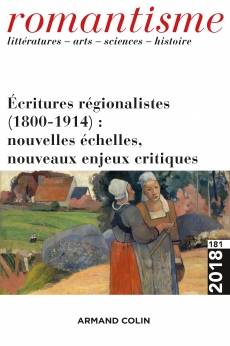
ROMANTISME N° 181 (3/2018)
Pour acheter ce numéro, contactez-nous
Recevez les numéros de l'année en cours et accédez à l'intégralité des articles en ligne.
Désireux de combiner une démarche sociocritique et une approche énonciative du texte littéraire, cet article aborde la question de la marginalité sur le plan de la perception, en interrogeant la manière dont les procédés formels à l’oeuvre dans Salammbô de Flaubert travaillent la représentation du pauvre. L’analyse, attentive aux points de vue perceptifs et à leur mise en texte, met en lumière un dispositif énonciatif ambivalent, lequel renvoie dos à dos des évidences perceptuelles et une distanciation par rapport aux codes d’appréhension façonnant la figure du pauvre. Néologisme, double ironie et effacement énonciatif sont autant de stratégies textuelles qui, in fine, concourent à redéfinir cette réalité sociale de manière instable, en dehors d’une instance tutélaire de laquelle la définition du pauvre est habituellement tributaire.
This paper, in combining a socio-critical methodology with a linguistic approach to the literary text as utterance, focuses on the perception of marginality by discussing the way different formal procedures used by Flaubert in Salammbô affect the representation of the poor. The analysis, sensitive to the writing up of point of view and perception, highlights the ambivalence of the narrative set-up, which rejects both empirical evidence and the putting in perspective of the codes by which the poor are usually described or perceived. Neologisms, double irony, and the erasure of the writing subject are textual strategies that, in fine, contribute to a redefinition of this social reality in an unstable manner, for lack of a final instance that thus comes out as usually necessary in order to arrive at a definition of the poor.

